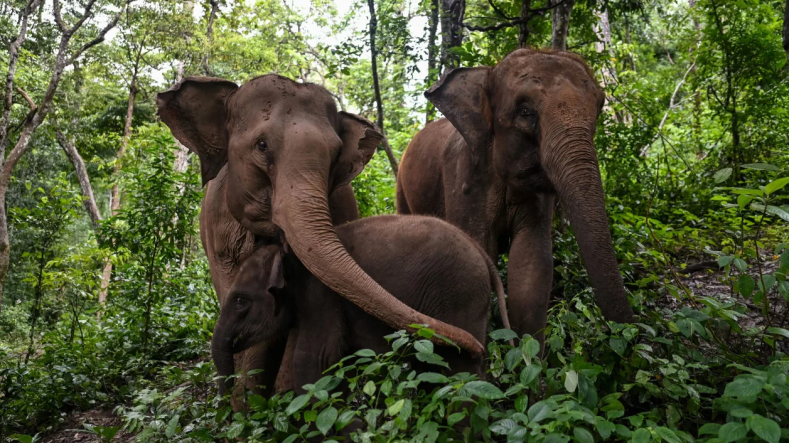
Asian elephant habitat shrinks almost two-thirds, study finds
Elephants have lost almost two-thirds of their habitat across Asia, the result of hundreds of years of deforestation and increasing human use of land for agriculture and infrastructure, CNN reports, citing a new study.
The Asian elephant, listed as endangered, is found across 13 countries in the continent but their forest and grassland habitats have been eroded by more than 64% – equating to 3.3 million square kilometers of land – since the year 1700, researchers said.
The study, published Thursday in the journal Scientific Reports, compiles the work of several experts led by biologist and conservation scientist Shermin de Silva, a professor from the University of California, San Diego.
The team found that large-scale habitat loss has driven up the potential for conflict between elephants and humans – a situation that shouldn’t be accepted as inevitable and one that can be avoided with proper planning.
“My worry is that we are going to reach a tipping point in which cultures of mutual non-confrontation toward one another get replaced by cultures of antagonism and violence – by both species … We have to de-escalate this situation,” said de Silva, who is also founder and president of Trunks and Leaves a non-profit dedicated to the conservation of wild Asian elephants and their habitats.
The study found that the greatest decline in elephant habitats was in China, where 94% of suitable land was lost between 1700 and 2015. That was followed by India, which lost 86%.
Meanwhile, more than half of suitable elephant habitats have been lost in Bangladesh, Thailand, Vietnam and Indonesia’s Sumatra. Bhutan, Nepal and Sri Lanka also saw a significant decline – mostly in areas where elephants still roam today.
Researchers found there was an acceleration in elephant habitat loss from the year 1700, which coincided with the expansion of European colonization of the region.
During this time, logging, road-building, resource extraction and deforestation ramped up, and farming became more intense on land that might otherwise have hosted wildlife.
The era also saw “new value systems, market forces, and governance policies” reaching beyond the cities of Europe into the forests of Asia – speeding up elephant habitat loss and the fragmentation of the species, the study found.
India and Sri Lanka have the largest remaining wild population of elephants in South Asia.
Newsfeed
Videos






























